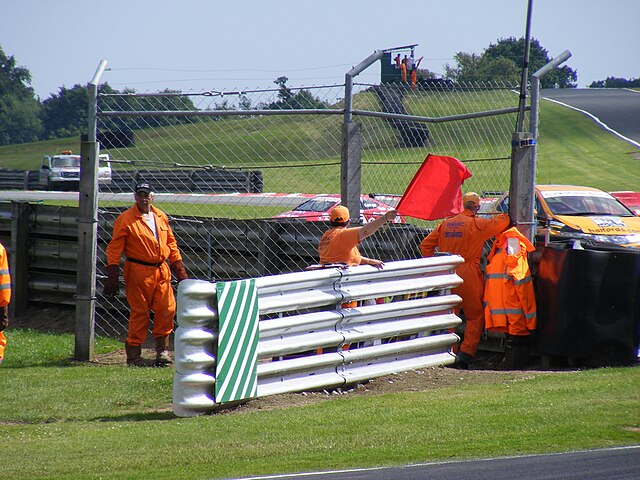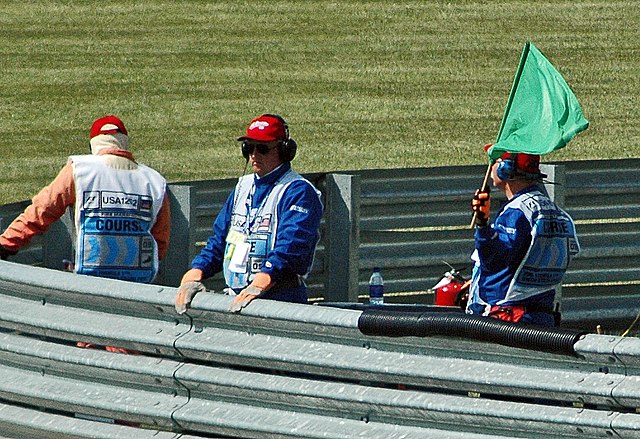Racing flags are traditionally used in auto racing and similar motorsports to indicate track conditions and to communicate important messages to drivers. Typically, the starter, sometimes the grand marshal of a race, waves the flags atop a flag stand near the start/finish line. Track marshals are also stationed at observation posts along the race track in order to communicate both local and course-wide conditions to drivers. Alternatively, some race tracks employ lights to supplement the primary flag at the start/finish line.
The flagman displaying the chequered flag with a complete set of stockcar racing flags
A yellow flag with SC (safety car) sign is shown during the 2006 United States Grand Prix.
A Chequered flag being used at the end of the 1906 Vanderbilt Cup
Late model stock car driver celebrates with a chequered flag
Motorsport marshals are mainly volunteer workers responsible for the safety of motor racing competitors. They are stationed at various points of danger around race tracks to assist them in case of any collisions, accidents or track problems. Marshals are also known as course workers, corner workers, corner crews, turn marshals, corner marshals, track safety workers, or rally marshals.
Track marshals in Britain, in this case waving a red flag
A track marshal at the 2015 Mexican Grand Prix
A flag marshal at the 2005 United States Grand Prix







